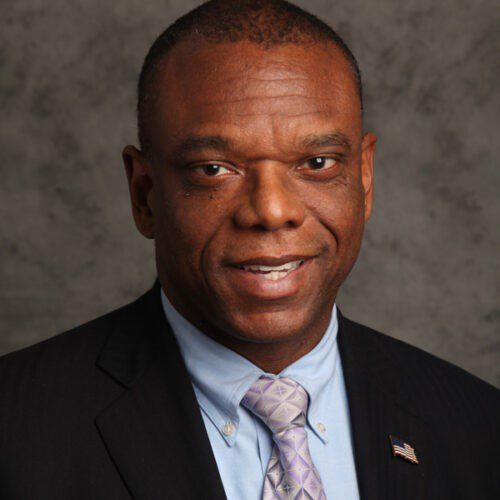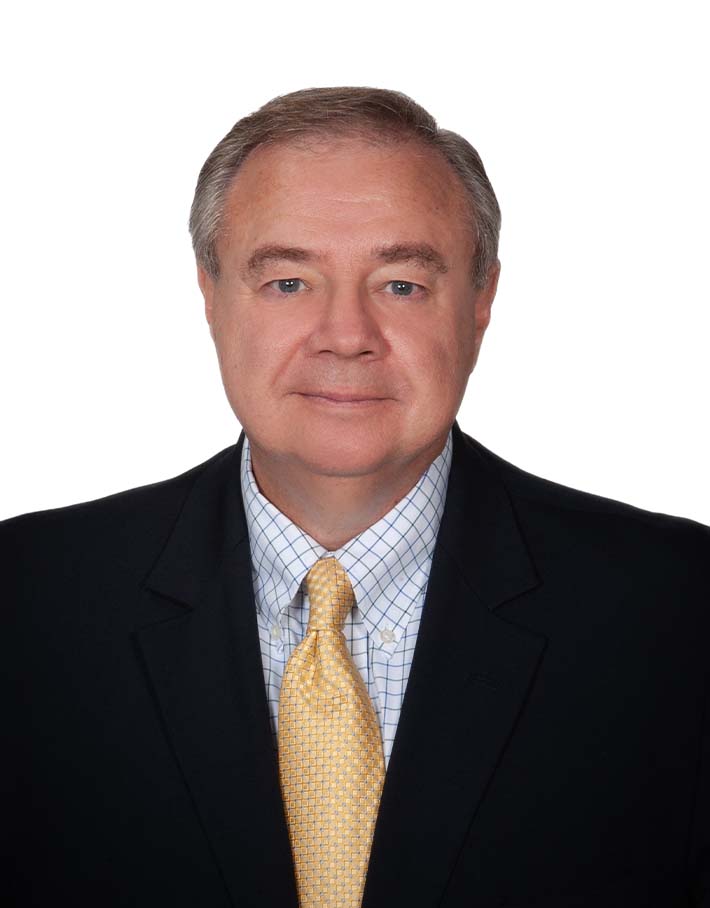Protect Your Vulnerable Customers: Combating Investor Fraud
Subscribe to our original industry insights
The investing population has grown and so has their wealth. This is good for their finances, but also creates more opportunities for fraud and abuse. In this week’s Oyster Stew Podcast, Bob Mooney, General Counsel of Oyster Consulting and Ron Long, Principal of Long Life Consulting, walk through the issues around protecting elder and vulnerable investors against fraud and abuse, and what financial services firms are doing to combat it.
Oyster Consulting has developed comprehensive Written Supervisory Procedures and Policies and Procedures that, once customized to your firms’ products and lines of business, will enable you to mitigate risks associated with vulnerable investor clients. When exploitative instances occur, Oyster’s Policies & Procedures provide guidance for identifying, reporting to appropriate state agencies, monitoring and resolving these events.
Transcript
Transcript provided by TEMI
Libby Hall: Hi, and welcome to the Oyster Stew Podcast. I’m Libby Hall, Director of Communications for Oyster Consulting. As the investing population has grown, so has their wealth. This is great for their finances, but it also creates more opportunities for fraud and abuse. In today’s podcast, Bob Mooney, General Counsel of Oyster Consulting is joined by Ron Long, principal of Long-Life Consulting and an expert on the issues facing elder and vulnerable investors. Join us as Ron and Bob walk through the issues around protecting elder and vulnerable investors against fraud and abuse, and what financial services firms are doing to combat it. Let’s get started. Bob.
Bob Mooney: Thanks, Libby. My name is Bob Mooney. I’m the General Counsel for Oyster Consulting and the host of today’s podcast. With me is Ron Long, principal of Long-Life Consulting, and an expert on the issues facing elder and vulnerable investors. I’ve had the pleasure of working with Ron for over 20 years in the area of detecting and preventing financial abuse of elder and vulnerable investors, and look forward to discussing with Ron the scope of the problem and what financial services firms are doing to combat it. Good morning, Ron.
Ron Long:
Good morning, Bob. And I feel a little bit like the Blues Brothers getting the band back together. I literally got started focusing on the elderly under your tutelage. So this has been a good run over the last 20 years.
Bob Mooney:
It’s good to be working with you again, Ron. Ron, there’s a fair amount of public commentary today on the need to protect the elder and vulnerable population from financial abuse. Can you dimension the scope of the problem?
Ron Long:
Yeah, and it really starts, Bob with the major demographic change. When we think about the those over 65, originally when we came up with social security, they chose the age 65 because most people died at 63, 64. They didn’t think they’d have to pay out much. But we’ve gotten healthier over the years. We’ve grown a lot. So the older adults are a bigger part of our population, actually projected to be having more older adults than kids under 18 by 2035. So we have that dimension. And then as the older population has grown, they also have grown in their wealth. You folks over 55 have close to 72% of the wealth of this country. That is very good for us as we age. But guess what? It’s also very good for the bad guys who now have a target rich environment on which to poach. And then the final thing is, even though we’re living longer and we’re living healthier, there is the tendency and just a medical fact, that the longer you live, the likelihood of Alzheimer’s or diminished capacity comes in. So even in the absence of actual fraud, we may have our older folks making themselves vulnerable to abuse. Just by the nature of aging.
Bob Mooney: We have a situation where there are more older folks. That’s where the money is concentrated increasing cognitive decline as people age. Is there any estimates on the amount of financial abuse that this population experiences on an annual basis?
Ron Long: Yeah, and this has been a frustration, that you and I have talked about it. We do not have good numbers there. There are estimates that range from 2.9 billion per year to 36 billion per year. I think those two extremes may be too high, but it is a significant amount of money moving from the hands of our older folks into the hands of bad guys.
Bob Mooney: Ron, when we were working more closely together directly on this problem, I recall that there were several primary perpetrators of financial abuse on elder and vulnerable, and those were among others, family members, caregivers, and confidence people who would earn their confidence. Could you describe some of the types of scams that you’ve encountered? Some of the characteristics?
Ron Long: Yeah. So I call it the three Fs and the ‘C’ friends, family, fiduciaries, and caregivers. Not my GPA in the first year of college, but these folks all get past the defenses that many of us would put up. So they’re inside already, and they’re using that advantage to get at some of our older people. It’s as simple as the 45-year-old Nary DoWell’s son that won’t get off mom’s couch. The advisor had agreed to $2,000 a month withdrawals, and all of a sudden we’re now seeing $10,000, $12,000, $13,000 withdrawals. You also have that caretaker that comes in, the older person’s in a little less physical shape than they ordinarily would be, and they take advantage. Sometimes the fiduciary, and I hate to say it, we have some of our religious leaders take advantage. So there are people who are inside the guard of our older folks that take advantage, but I do not want to ignore the bad guys. The scammers and those folks range from the scams of the romance scam, which the FBI has said is one of the top confidence scams affecting the elderly, to the grandparent scam or the tech support scam. And in a lot of ways, crypto is now being used. There’s no actual crypto in motion, but they’re using that as allure to scam older folks as well.
Bob Mooney: Ron, before we leave the scope of the problem, I know we’ve been talking about financial abuse, but I believe it’s not that it is common, but that financial abuse is often associated with physical abuse as well. Is that your experience?
Ron Long: And that is the experience. We literally had a real life example of the caretaker bringing the older woman into the office to discuss making some additional withdrawals, adding the caretaker to the account, and the assistant actually saw the woman stepping on the older person’s foot to make her answer affirmatively. That’s a situation where you reach out and get law enforcement involved, but that requires all of us to pay attention to things like bruising, fearfulness, and what have you.
Bob Mooney: I know this has been a topic that we’ve worked on for over 20 years and the regulators and the legislatures over the last 15 to 20 years as well, have taken an increased interest in protecting this population. And I know you were instrumental in several states in getting the legislature to pass bills that would help protect elder and vulnerable investors. But can you talk a little bit about, and I know you recently attended the FINRA conference as well, can you give us a little perspective on the current regulatory and legislative landscape?
Ron Long: Yeah, Bob, the real truth of this is we do not have a very neat national initiative combating elder financial abuse with laws, regulations, and things all of us can follow. So FINRA actually is the one place where we do have a national footprint. Every broker in all 50 states, District of Columbia, and Puerto Rico do have to follow FINRA‘s rules. And FINRA has come up with two very important features. One was the trusted contact. Have every broker ask their customer, would you like to name someone we can reach out to in case of an emergency, whether it’s financial, or arguably, you slip and fall in the lobby, but we’d like to have that name for contact. This person doesn’t have control over the account, but it is a way for the firm to get involved. And then the second thing FINRA did, which we think is very important, says that the firm has the option, the opportunity to pause or hold up a transaction where the firm suspects elder abuse. We think those two things done on a national basis will make a tremendous dent in some of the abuse. The challenge, of course, is everyone’s not regulated by FINRA. The entire banking industry doesn’t have a national rule similar to these two rules that FINRA has put in place.
Bob Mooney: So those are great advances by FINRA to help. Here I am a little concerned from a firm perspective on the option to take action when they see some type of potential abuse. Whether that option from a regulatory perspective is an expectation or truly is it a discretion that firms have whether or not to put a freeze on, on assets in the account?
Ron Long: Well, I think you’re onto an issue that we all still have to work through. Whether it, when that examiner comes in and you had a situation and you didn’t put the freeze on the account, will the examiner think, quote unquote, you violated the rule? We don’t think that should be the case. But examiners, as you know, are individuals throughout the country. The other is we have to worry about our litigation from the plaintiff’s bar. They will use this rule to put it into their potential lawsuits against a firm that while FINRA said, optional, you had enough facts where you should have actually acted.
Bob Mooney: And I think it’s a fair point to note as well. While we’re talking about regulatory exposure and financial exposure, from my perspective, I think one of the biggest risks for firms in this area is reputational exposure.
Ron Long: I think you hit the nail on the head, there’s no dollar amount. Back in the seventies, there was, where do I go to get my reputation back? If a firm gets sued for one of these cases, it really does make it a hard swim back upstream to get back to their prior status before the incident.
Bob Mooney: And the headlines typically start with elder investor when these matters hit the press. Talk a little bit about what FINRA is doing in this area. Can you talk a little bit what the states are doing?
Ron Long: Yeah, so there is good news in the state work because it is state by state. But we’re now up to close to 40 states that have taken this issue on. They’re not all uniform, but they have some nice features. Many of the states now allow a firm to pause a transaction rather than just a disbursement. Many people thought only to step in when money is leaving the firm. Many times you have a bad guy, you have a grandson who wants grandmom to move all of her money from safe investments to his new startup. So yes, it’s an investment. The money did not quote unquote leave the firm, but all of a sudden her holdings aren’t as safe. The states have also created a feature, which I think is a very good one, which is many people don’t have the foresight to name the trusted contact in a number of states.
They have what is allowed to reach out to a person reasonably associated with the account. The client didn’t name someone, but you know, Bob is a good son, he knows his mom well. You’re able minimal information, similar to trusted contact. You’re not giving Bob full rein over the account, but you’re all able to reach out to him as a person reasonably associated with his mom or dad’s account, such that he can then step in and look into the situation, talk about the romance, love of her life, or whatever it might be. So I think those are where you have the states trying different things than may be what the offender could do.
Bob Mooney: From a national perspective, and I know you work extensively with the retail branch system, what is some of the reluctance to reach out to try to get an ice or trusted contact authority?
Ron Long: Yes, and it is individual by advisors. Some are very good at it, but some think that this is not a topic I want to bring up. Ron, I need to talk to you might get Alzheimer’s, so I need somebody I can call, or Mary, you might fall for a romance scam. So I don’t trust you to make your own decisions. Give me a name for a trusted contact. We think you have to take the approach similar to what we do now at the dentist’s office or the doctor’s office, that it’s routine, it’s expected, and it is just another feature that we think is helpful in the account. Not that you may suffer from dementia or diminished capacity, but these are all good practices that any good business, whether the doctor’s office or the dentist’s office would put in place.
Bob Mooney: You touched on a combination of both regulatory expectation and best practices. Maybe let’s move into a more direct discussion around in today’s environment with the tools that are available regulatory and legislatively. What should firms do and what are you seeing firms do to try to address this problem?
Ron Long: Yeah, I think there, it’s, unfortunately, a two-tier system – your larger firms are able to put dedicated teams focused on this area. Folks that help improve the outreach on trusted contact, they’re able to do that. When you’re a smaller firm though, you can’t do the full team, but we do think it’s important to get someone in the firm more knowledgeable, trained up a little more and have all the folks in the firm know that Betty or Ron is the go-to person when we have an elderly situation. The other is to just focus on some of that information about your clientele, know that they’re aging, know more about them. And back to what we say in a lot of things, documentation, you should document the conversations, document your interactions with the client or customer. When you first hear something about the new love interest from Portugal, but he’s based on an Arab oil rig and can’t get to his money, that should be a clue. That should be written, that should be a clue. And now the firm is more alert at that point. So those are all ways to get started in this area. The other would be to make sure when you’re doing your outreach for trusted contact, reach out, have the conversation if the client declines. Document that there was a decline by the client to name a trusted contact.
Bob Mooney: You know, Ron, when we worked together on this topic, it always struck me as interesting in talking to a financial advisor when we had a situation occur when there was financial abuse, that upon reflection the advisor noticed over a period of time a change in behavior, a change in investment philosophy referencing to other influencers in the decision-making process. From your perspective, anything firms can do to try to aggregate or create some type of institutional memory of these types of evolving changes with clients?
Ron Long: Yeah, there are. I think there’s some good FinTech out there that is helping a firm or will help a firm maintain notes of what’s going on and be able to reference back. If I see two or three customers all mentioned the latest crypto investment that is being sold through Ron, that should be something that the aggregating tool to allow the firm to say, let’s take a closer look. We’ve got two or three customers, we also know and can learn that there are pattern changes in what our customers are withdrawing. We’d agreed on the $4,000 a month withdrawal announcing for the last three or four months far in excess of that on occasion. That can be very plausible, taking a fancy trip, helping a grandchild with a college tuition, but that information should at least be documented and maybe a query or two submit it just to make sure you’re knowing what the client’s situation is.
Bob Mooney: Ron, have you come across cases where the trusted contact, or in case of emergency person, was the person suspected of being the scammer?
Ron Long: That unfortunately does happen, Bob, and it is fortunately both FINRA’s rules and many of the state’s rules. If you suspect them, you don’t have to use them and you should not go to them. In fact, I can’t give a number on it, but I still think we’re better off having listed trusted contacts as a potential people to reach out to. And if we have to avoid them because they’re the perpetrator, that just puts us in a situation where you’re with the other customers who don’t have trusted contacts listed. You still go through same process steps of what you do when you see a potential elder financial abuse situation.
Bob Mooney: And I do want to mention and get your kind of real-world experience on this, FINRA rules do have certain timelines that firms need to follow. And maybe you could talk a little bit about just some of the process involved in complying with the FINRA rules in order to interrupt or freeze a transaction.
Ron Long: Well, FINRA, I think, again, has done a good job over time. The original and you still have the first 15 days to pause a transaction. You get to do that, you pause the transaction, start your investigation without going back to FINRA or the regulator. If you need an additional amount of time, you get an additional 10 days. So up to 25 days for the firm to investigate and figure out what’s going on. One of the things you and I have experienced, Bob, is that APS are very nice people, but often they can’t resolve things within a 25-day period. So FINRA recently added to that time period saying that if you in fact reported a case of elder financial abuse to adult protective services or to a state securities regulator or other regulator, you then get an additional 30 days. So you would have up to 55 days, which usually should be enough time to have you do what you’re doing, hear back from the regulator, law enforcement or whomever, and then make a final decision on whether the pause should stay in place or be lifted or what have you.
Bob Mooney: I think it’s important to keep in mind those timelines because that’s what gives you the protection in order to step in and take action. So, Ron, most of the rules that give firms, whether it’s an offender rule or a state law, that give firms the opportunity to step in where they see fraud don’t necessarily extend to where you’re suspicious. The activity is suspicious, but there’s not necessarily evidence of fraud. What can firms do in the case where there’s behavior that is inconsistent with the clients, historical behavior and maybe contrary to their best interest, but there’s no indication that a fraud is occurring.
Ron Long: And that’s why the tougher situations out there, Bob, is one I’ve mentioned to all of our regulators to try and get them to focus on it. It puts a firm in a tough spot. One thing that we did do was to actually put in our account agreement with the customer, which says if we see something amiss or somehow think there’s something afoot, we reserve the right in our customer agreement with you to slow things down to pause and seek some sort of intervention, whether from you, your family or the regulatory bodies. So every firm doesn’t have that in place now, but they can look to their customer agreement that exists as it does now to see if that allows a place to do it. The other thing would be to then in fact make the report to Adult Protective Services. I’ll be pretty frank that often they will not get involved because they don’t see fraud, but they’re the agency that might step in if what they call self-harm, usually seen in other ways. But we would argue that diminished capacity could reach a point of self-harm such that APS may step in to investigate that, may get their family involved. And at that point we could get more clarity around the situation.
Bob Mooney: You mentioned Adult Protective Services, and could you talk a little bit about what resources are available to firms in this area?
Ron Long: Yeah, so Adult Protective Services are in every state – variations on how good, or I shouldn’t say how good, but how active they are. Some remember are loaded with the physical abuse cases, so financial abuse cases may not be their highest priority, but you can find the firm in your area by going to the website. Or actually there’s a phone number, let me give you the one 800 number – 1 800 677 1116, 1 800 677 1116. Or you can also go to eldercareacl.gov – eldercare alpha charlie lima.gov.
Bob Mooney: And what about criminal authorities? Ron, is there any time you see firms reaching out to the FBI or organizations like that?
Ron Long: Yeah, we do encourage you to reach out to local law enforcement. Again, just to be frank, for some of them these are not priority cases. They’re seeing a lot of, in their mind, more urgent matters. But we do encourage reaching out to law enforcement, local law enforcement, and if the fraud occurs over the internet, the FBI is very interested. They’ve taken a great interest in this area in the last few years, and they’ve set up a website IC3.gov, so it’s I, as in Ice, C, as in Charlie, the number 3 dot GOV where it’s the internet crime complaint center of the FBI. They love getting these internet fraud cases because it allows them to start aggregating, focusing whether there’s a geographic hotspot or what have you. And they can step in, but they can’t do anything if they don’t hear about the cases. So we want you to report to Adult Protective Services. We want you to go to the securities regulator, but if it’s an internet fraud case, please make sure you’re also bringing the FBI in through this IC3 website.
Bob Mooney: Terrific. Ron, before we wrap up, anything out of the FINRA conference that you thought would be helpful for listeners to know?
Ron Long: I think FINRA has made it very clear they do want to be thinking, are there other things they should be adding to this rule? Is there more they can do? The, quite frankly, discouraging thing is that the take up rate of trusted contact across the industry is simply not that great. What more can they do? Does it require more PSAs? Does it require more training on what’s the correct bedside manner for the advisor as they approach their customer? So that’s one of the biggest things that they’re focusing on in terms of how do we get more trusted contact in there and then they’re willing to listen to actual use cases of the pauses and the timeframes as to whether that’s working. The diminished capacity question? They still worry that advisors are not gerontologists, how do they know? But they do acknowledge that at some point that may still need to come across their desk and they need to make some decisions.
Bob Mooney: Terrific. Alright, so I was going to wrap up now. Ron, were there any other points that we didn’t hit that you wanted to talk about?
Ron Long: No, the only other thing I would add, particularly for the smaller firms, is that many times your peer firms have seen some of these issues. So if you can find ways where in your locality you guys get together quarterly, once a year, twice a year just to talk shop on what you’re seeing, what you’re doing, how you approach it. We’ve found that, frankly with some of the bigger firms, we actually share a lot. I think that can also work in a smaller firm world as well.
Bob Mooney: Ron, would you bring in Adult Protective Services to those quarterly or semi-annual meetings?
Ron Long: I absolutely would if you could. Now again, some of them are, I don’t want to say this the wrong way, but this is not their strong suit, so they may decline an opportunity to come speak, but many over the years, they’ve become more engaged. So I would absolutely invite the Adult Protector Services Agency from your area to one of these meetings.
Bob Mooney: Well, Ron, it’s about all the time we have today. I’ve really enjoyed reconnecting with you and talking about a topic that I know both of us have an awful lot of passion about. For our listeners, if you’d like to learn more, please go to oysterllc.com. Thanks very much, Ron. I enjoyed it.
Ron Long: Thank you, Bob. I enjoyed the opportunity.
Libby Hall: Thanks everyone for listening. If you’d like to learn more about our experts and how Oyster can help your firm, visit our website@oysterllc.com. And if you like what you heard today, follow us on whatever platform you listen to and give us a review. Reviews make it easier for people to find us. Have a great day.




